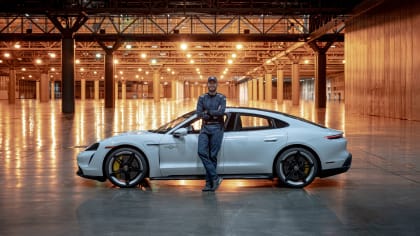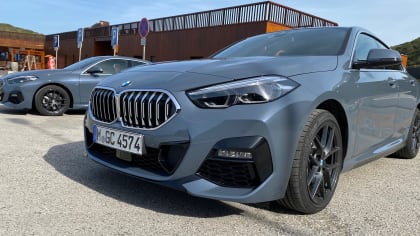Little Cars, Big People
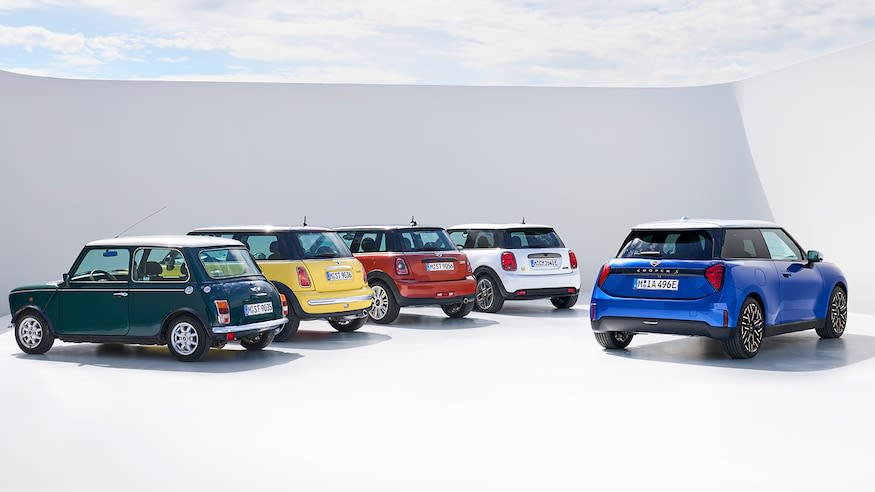
Can Little Cars Come Back as Americans Get Bigger?
Fiat is bringing back a new version of the tiny 500e for 2024 in the USA. MINI has several new little models baking in the oven. In the meantime, American waistlines have been getting bigger. Can little cars like the new 500e and Cooper succeed as Americans get bigger?
By John Grafman
Tue, Nov 7, 2023 08:54 AM PST
Featured image: The first through fourth generation Mini Coopers flank to the left of the new, all-electric 2025 MINI Cooper SE on the right. Americans have gained an average of 25 pounds since the first Cooper was introduced in 1959. (Image courtesy of Bayerische Motoren Werke AG)
This article is a part of
2023 Los Angeles Auto Show
Click to see the collection and all the included articles!
“Let’s get small” – Steve Martin.
Over decades, buyers have accepted the fact that more car costs more money. Americans have also associated smaller cars with economy. And, from a practical standpoint, who really needs larger cars for our daily commutes and errands?
Both Fiat and MINI (BMW) are happy to enlighten road warriors on the virtues of going small. Let’s forget for a moment about the commonsense reasons and focus on the others. Any enthusiast can educate the masses on the handling benefits of a smaller and lighter machine. Lotus made its reputation on reducing mass. Without the lugging around the size of an SUV, it requires less battery - saving weight and cost.
Petrol powered or not, smaller will always be more efficient. With less overall heft, it takes less energy to get it rolling and keep it rolling. A natural benefit comes when the driving is over. Parking is accessible in spots that are more suited to bicycles than cars.
Now, the cold, hard facts. As smaller ICE (internal combustion engine) cars are above average in terms of economy and maneuverability, is morphing into a BEV (battery electric vehicle) really necessary at this time? Yes, it has benefits over petrol burning brethren, but not as significant as larger cars or trucks. Plus, the current cost of batteries will only increase the bottom line on the sticker price, unless the OEMs (original equipment manufacturers) are willing to eat the loss. Similarly, why have an electric motorcycle when a gas powered one is already rather efficient?
Certainly, one can state emphatically, reducing pollution is a good thing. It’s especially important when considering climate change and the world that we’re going to be leaving the next few generations and beyond. Yes, the garden variety, gas consuming MINI or Fiat 500 does expel far less nastiness than the heavyweights, but that isn’t the point. This requires a global effort in every respect, large or small.
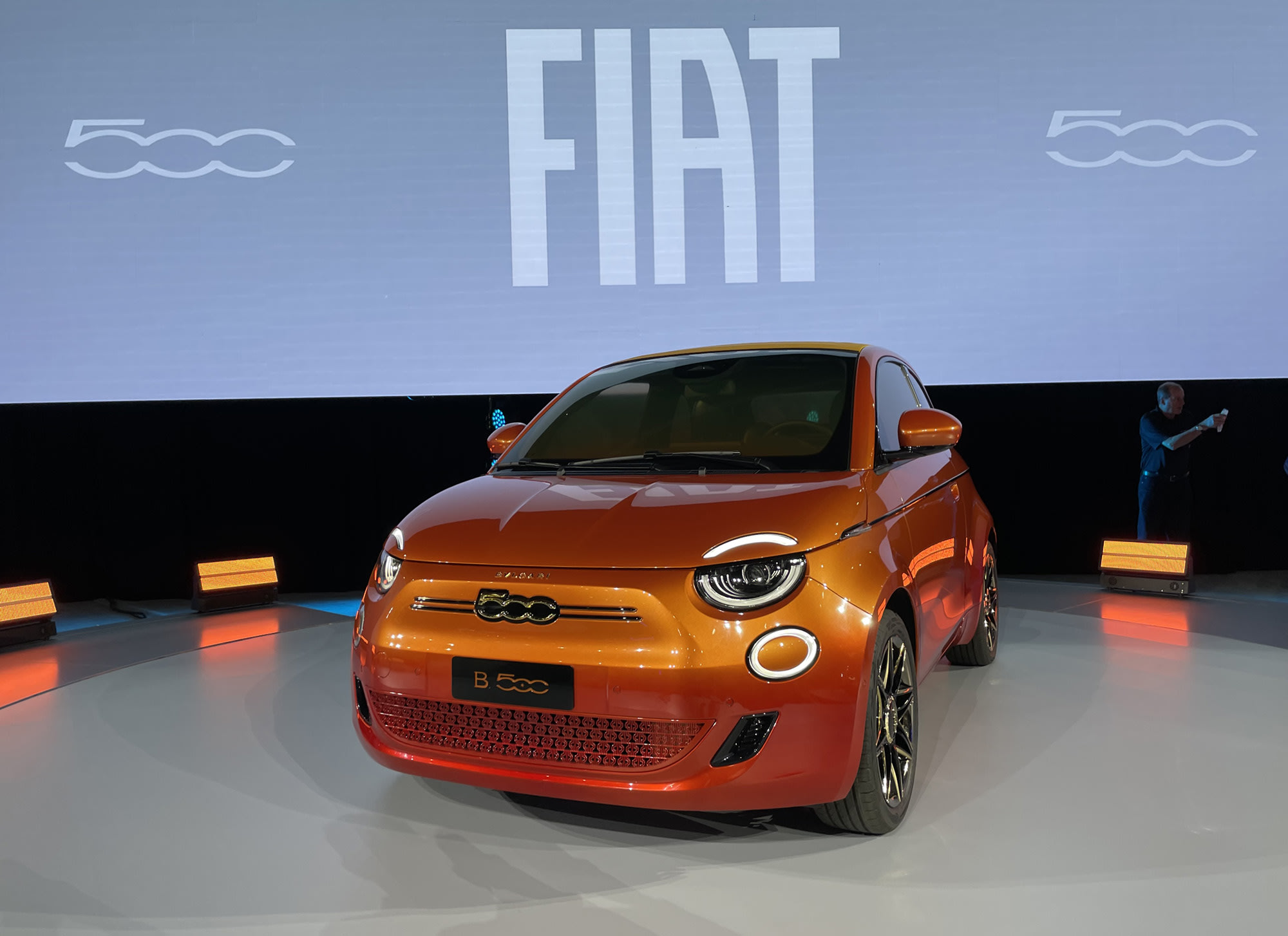
Bulking Up
On the subject of larger vehicles, Americans are fond of bulking up. And this applies to both the cars they drive and their waistlines. The land of the free is also the land of the well-fed. It’s no secret that those in the USA are progressively expanding in all directions.
The estimate of U.S. adults aged 20 and over (from 2017-2018) shows 30.7% are overweight, 42.4% are obese, including 9.2% with severe obesity. The National Health and Nutrition Examination Survey (NHANES) results should be setting off alarm bells. Or another way to look at it is, 17.7% of Americans are none of the above and have a health body mass ratio.
In the survey from 1960-1962 - an era that gave rise to smaller cars - roughly 46 percent of our country was overweight, obese, or severely obese. Since the early sixties, 82.7 percent are now classified as overweight or more. We have seen an 80 percent increase of those with an unhealthy body weight. So long Twiggy and hello Cookie Monster!
Will Buyers Be Comfortable in a Smaller EV?
Regardless of how good these automotive products are, will buyers be comfortable (no pun intended) in a smaller EV? And the existential question we have to ask is, does smaller make a difference anymore? Because of the cost difference between petroleum and electric charging, paying more for a larger EV could be worth it. After the initial, upfront cost, the charging costs will be far less expensive than filling up the tank in a comparable gas-powered machine, depending on the battery size. Smaller cars could come with smaller batteries, reducing the cost further, but that would add to range anxiety for potential consumers.
Now, all of these are all logical reasons both for and against the MINI Cooper SE and Fiat 500e. But people aren’t robots. The fun-factor driving a compact car is hard to beat in certain conditions. And the design might be a compelling factor with these European cars, too. At the end of the day, it won’t be the MINI and the 500 competing against each other, but rather it’s both cars taking on the world.
Perhaps the title of the comedian and actor Steve Martin 1977 record album had it right – “Let’s get small”.
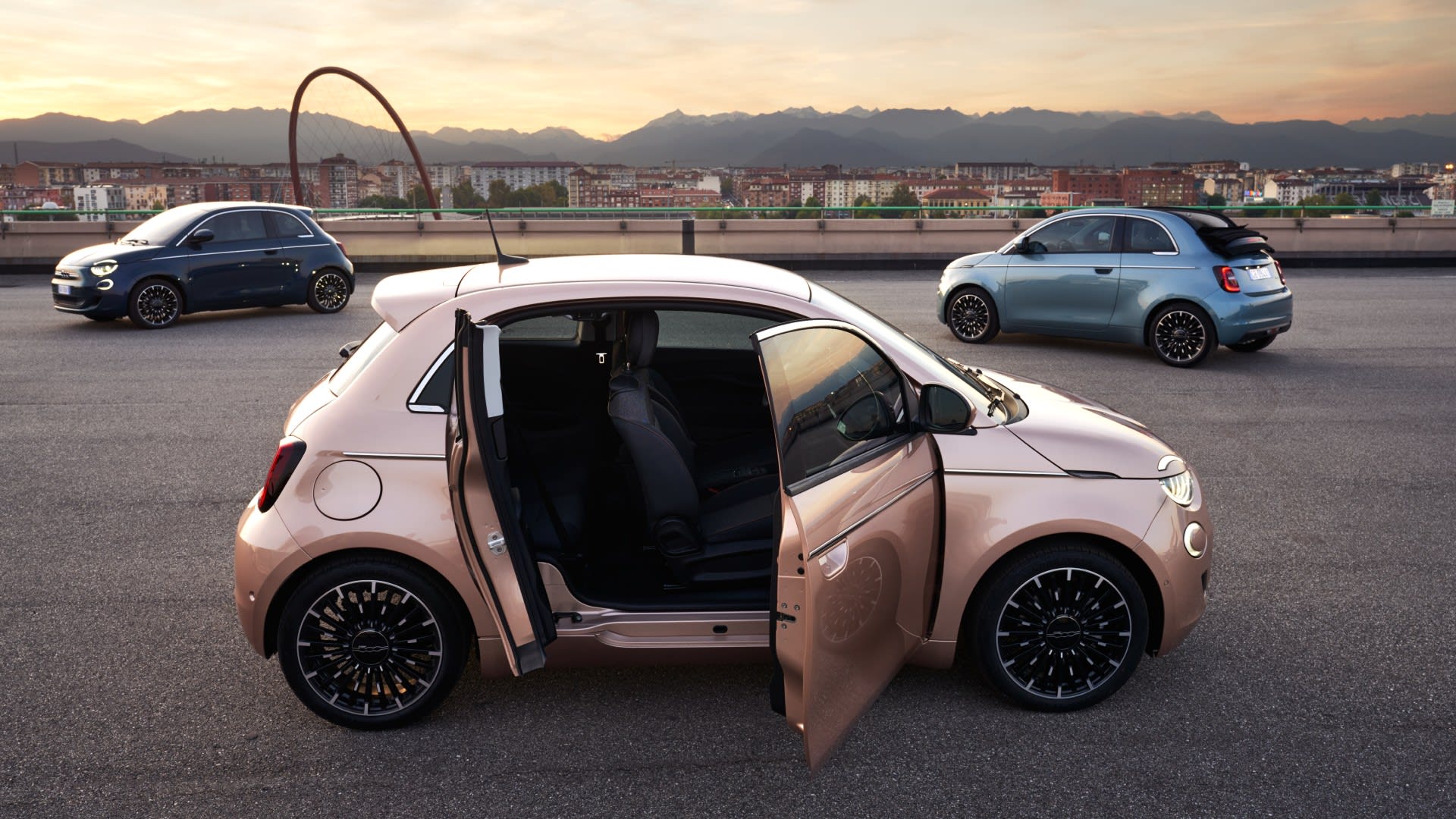
Fiat 500 Goes Totally Electric
Stellantis brands decided to sit out this year’s LA Auto Show. While it gave us a peek at what the future holds last year, we will have to rely on the specs from the European versions. A PR representative informed us that the information will be close, but not necessarily the same as those from across the pond. Given Fiat has experience with the Fiat 500 as an EV, the latest version should be a noticeable step up given the advancements in technology.
The Fiat 500e in Europe can be had with the smaller size lithium-ion batteries. The larger, and more likely to be found in America, features maximum power of 87kW, 118HP, 220 (Nm) of torque, coupled to front-wheel drive this can return a combined range of 198 miles from the 37.3 kWh battery. This returns a 9-second leisurely pace from 0-62 mph, and the 500e tops out at just 93 mph. Of course, most drivers don’t motor anywhere near that top speed limit.
The cute Fiat 500e dimensions are not surprising; length - 143” / 3,632 (mm), width – 74.8” / 1,900 (mm), height – 60.1” / 1,527 (mm), and the curb weight is 3,009 lb / 1365 (kg).
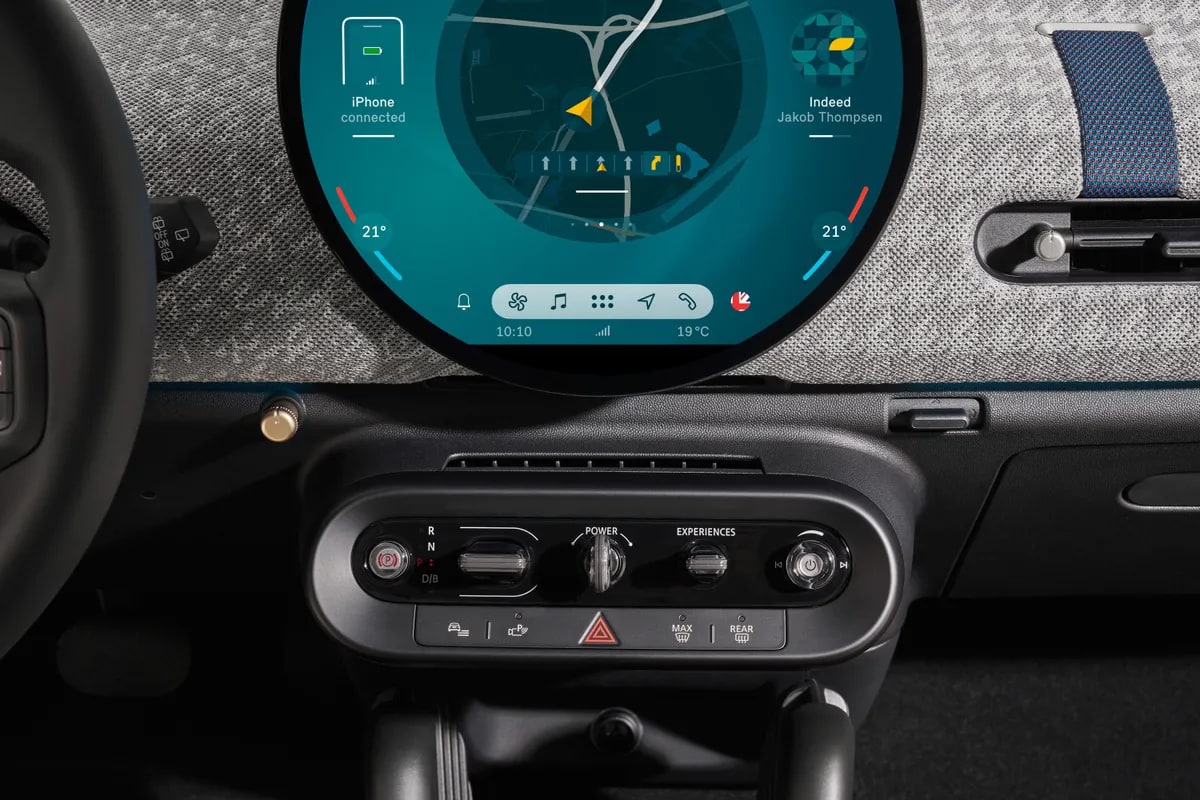
The Fifth Generation Mini Cooper
Mini gets to court the faithful with an all-new body design. The BMW owned British brand has a new design language “Charismatic Simplicity”. This does retain the overall flavor from the immediate prior generations, yet something is amiss. This is version is a bit watered-down and a bit less distinct. This is always the challenge when the model is so engrained in the minds of consumers. Any revision will be seen as a diluted, weaker style, or it will come off as exaggerated and potentially comical. It’s a fine line between appreciated and overlooked. However, the electric power will undoubtedly win over many.
With roughly 50 percent ponies more in power, the MINI Cooper E generates 184 hp / 135 kW via the electric motor and torque of 213 ft. lb. / 290 Nm. This allows trotting from standstill to 62 mph in 7.3 seconds.
For those seeking more power, the output of 218 hp / 160 kW of the MINI Cooper SE should do the trick. This sprints from 0 to 62 mph in 6.7 seconds with a maximum torque of 243 lb. ft. / 330 Nm. The range determined in the highway/street combo test cycle is 189 miles / 305 km for the MINI Cooper E and 250 miles / 402 km for the MINI Cooper SE. This should accommodate the typical needs of most drivers.
It's inevitable that sharp-eyed enthusiasts will be spotting the MINI all over the place. One place these won’t be seen is at Los Angeles Auto Show, or at least as of the time this was compiled. Perhaps the real question is, for new debuts, will enthusiasts be more incline to hit the local cars and coffee over the LA Auto Show. Times are changing!
About The Author

John Grafman spent far too much of his youth thriving on the canyons that connect the valley to Malibu. This antisocial behavior has evidentially scarred him for life. Nevertheless, using his powers for good rather than evil, John has spent the past dozen or so years working on models for numerous automotive design studios on the west coast. You’ve seen his work on the exterior and interiors of some of your favorite concept and production cars. You can now see his imprint throughout LA CAR.

